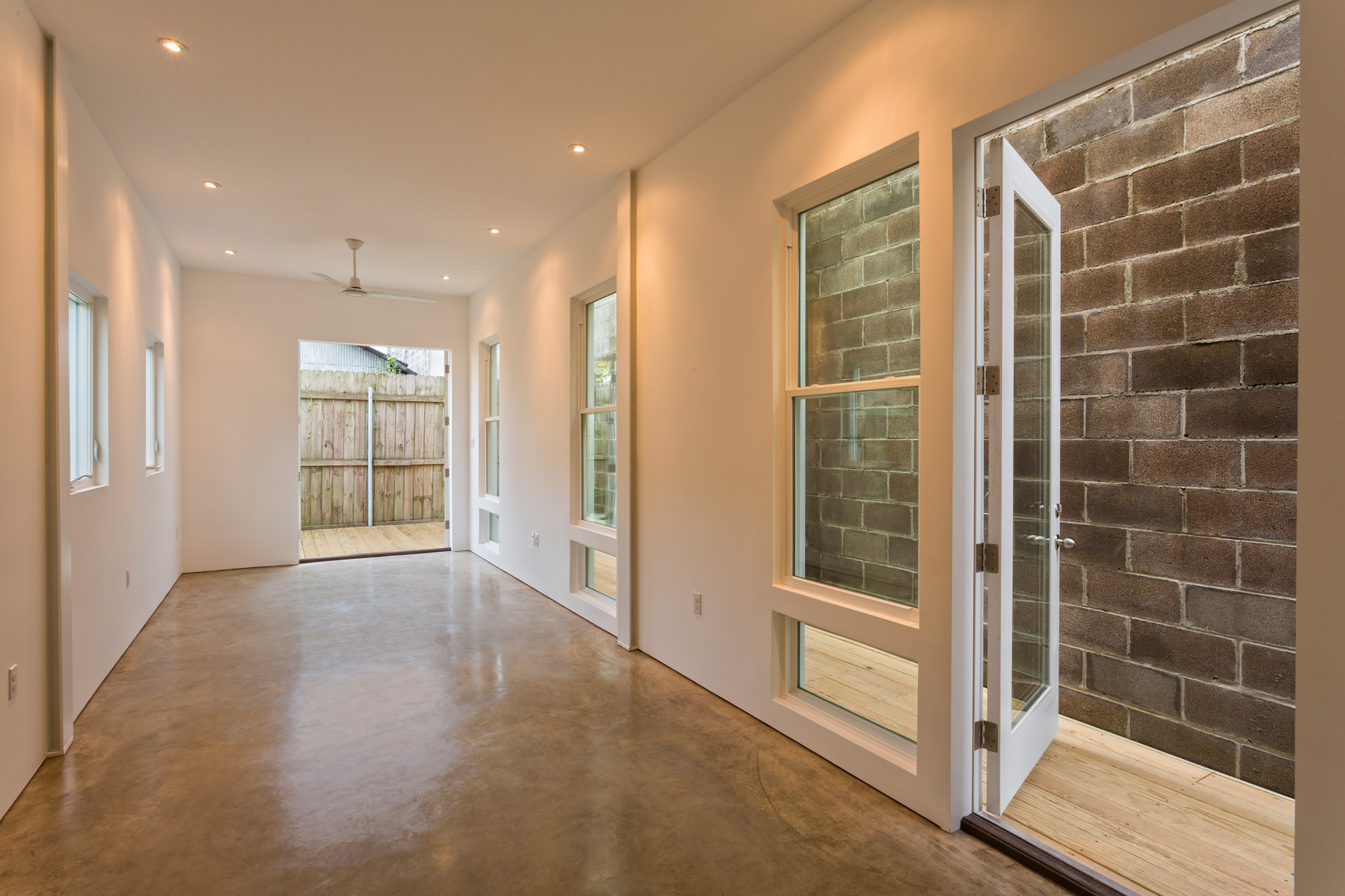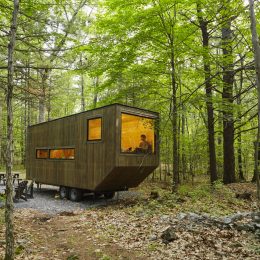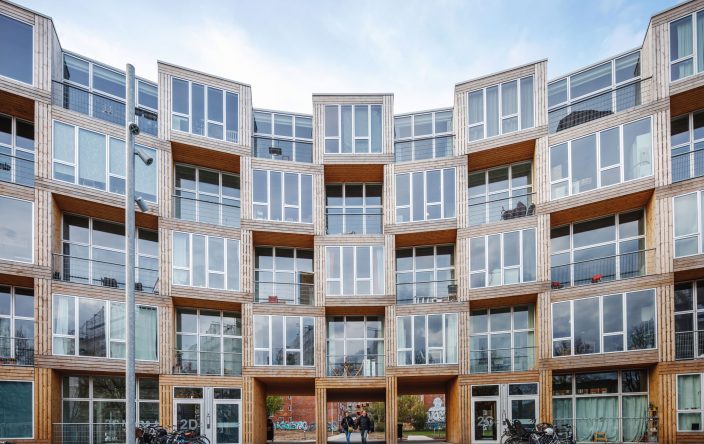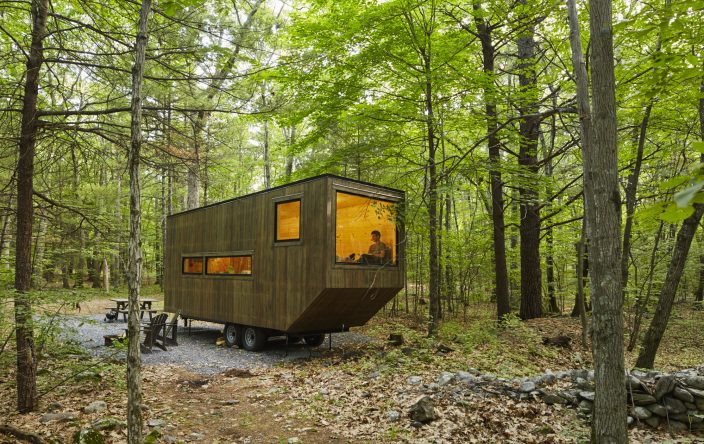
Affordable Living on Overlooked Land: The Starter Home* by OJT
Welcome to our projects series where we present benchmarks of urban living – self developed by architects and creative city makers. This week we want to present you the Starter Home* program by New Orleans based OJT (Office of Jonathan Tate) as well as the first realized version, Starter Home* No. 1, an affordable living prototyp.
We first introduced The Starter Home* by the Office of Jonathan Tate to you in the article “Tall, Green, and Global: 10 of the Most Innovative Architecture Projects of 2016” and want to take a closer look at the building and the housing program of which it is the first example.
Starter Home* is an opportunistic urban housing program created to develop affordable living, entry-level homes for the speculative market that prioritizes: contemporary design that is site based and not prototypical; programmatic diversity to address a range of buyers, from first-timers to downsizers; densification through infill of overlooked odd or irregular vacant land; right-sizing as a means of addressing both environmental concerns and to insure affordability; in increasingly gentrifying historic core neighborhoods, a product that enables household economic diversity in rapidly gentrifying historic urban cores; and to do this without subsidization.

The Starter Home* program is fundamentally about using inventive land strategies coupled with design to develop homeownership opportunities in urban neighborhoods that, due to upward economic pressures, are no longer assessable to large parts of the population. The starter home moniker is important in that it clearly associates the program with a quintessential, albeit fading, component of the American housing market. Conventionally understood as monotonous, mass produced, greenfield development, this program takes a decidedly opposite approach of architectural particularity and urban integration to achieve similar aims. And, unlike its namesake, it relies wholly on design to set the development agenda, create access to land and generate the product. Without architecture, in this context, there would be no development.
The program is financed and operated by a working collaboration between developer, builder and architect. It is conceived as being applicable to many, if not all, cities. The first test sites are in New Orleans. Through a thorough analysis of land availability and market pressures, it was determined that there were opportunities with land that was too small or undesirable — odd lots — to attract first-wave developers. The design of the home works within and expressive of the restrictive conditions of the site, resulting in fitting yet peculiar new housing types for the City.

The first completed home under this program, No. 1, is located at 3106 St. Thomas St. in the Irish Channel neighborhood of New Orleans. The site was situated between industrial warehouses and historic homes dating back to the beginnings of the neighborhood — a common condition in the fringes adjacent the River. The site is a remnant parcel long thought to be the rear yard of an adjacent home and measured only 16 ½ by 55 feet. With as-of-right setbacks, the footprint was limited to 10 ½ by 45 feet. The site was further complicated by being in a full control historic district with strict guidelines for scale and massing. The program for this initial house, one bedroom, one and a half baths with an office space, was tailored towards an individual or couple that, as a category, have found it increasingly difficult to locate available housing in this neighborhood.

The formal solution for the 975 square foot home was to use a staggered sectional composition that allowed the rooms to layer farther from the street giving an impression of a much smaller home. As a way to economize space, the side yard setback was used for entry and rear yard circulation, by way of an elevated deck, which was sandwiched between the home and adjacent warehouse CMU wall. The result is a narrow and tall structure that, through manipulation of the roof plane, is disguised from the street, read essentially as a low, one-story roof line, while the remainder of the home climbed up to the allowable building height.








Future Starter Homes* will continue to explore land-use, programmatic and spatial variations that position them as alternatives to the regimens of the normative speculative housing marketplace and we at Archipreneur are looking forward to the results!
Location:
New Orleans, Louisiana, USA
Project Data:
- Architect: OJT (Office of Jonathan Tate)
- Research and Design Team: Robert Baddour, Travis Bost, Rebecca X. Fitzgerald, Sabeen Hasan, Lauren Hickman, Kristian Mizes, Charles Rutledge and Jonathan Tate
- Structural engineer: John C. Bose Consulting Engineers
- Development Partner: Charles Rutledge
- Planning/Construction: 2015
- Residential units: 1
- Storeys: 3
- Floor area: 44 sqm (472 SF)
- Living space: 90.5 sqm (975 SF)
Join our Newsletter
Get our best content on Architecture, Creative Strategies and Business. Delivered each week for free.

JOIN THE
ARCHIPRENEUR ACADEMY
- 9 Stage Studio Growth Roadmap
- Library of In-Depth Courses
- Checklists and Workbooks
- Quick Tips and Tutorials
- A Supportive Online Community















